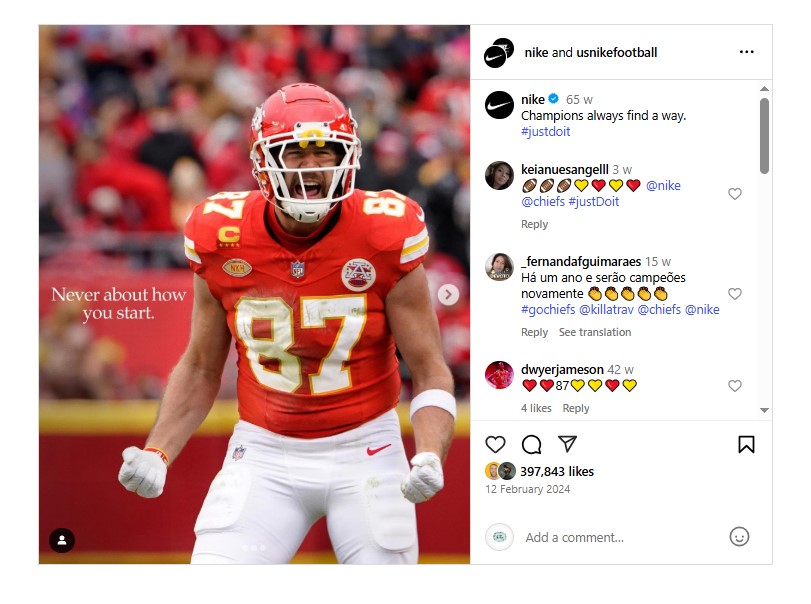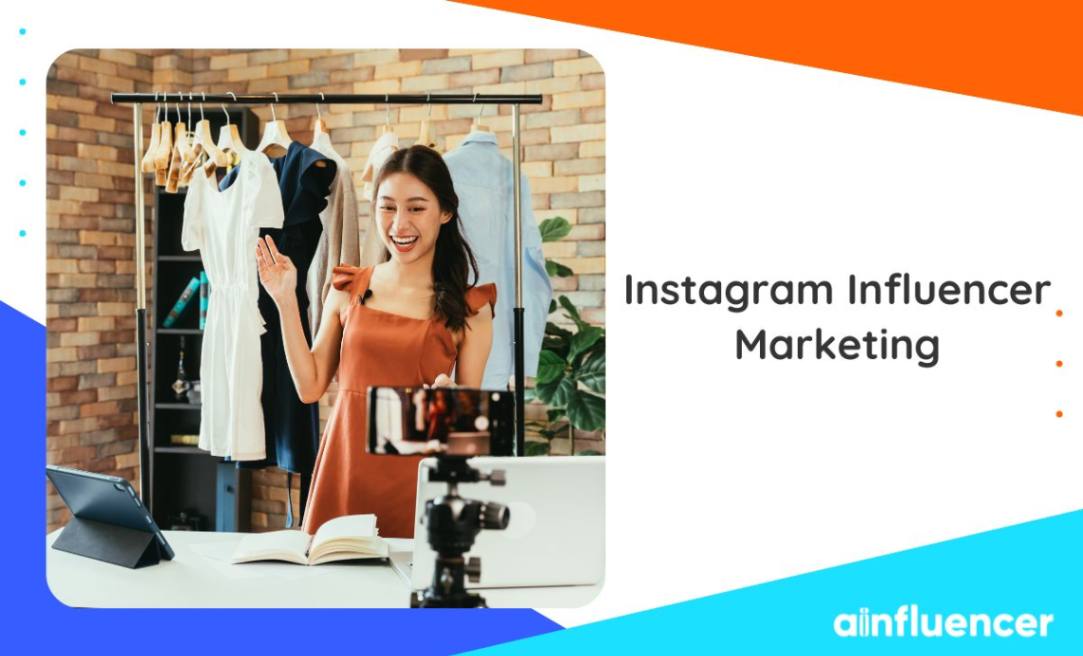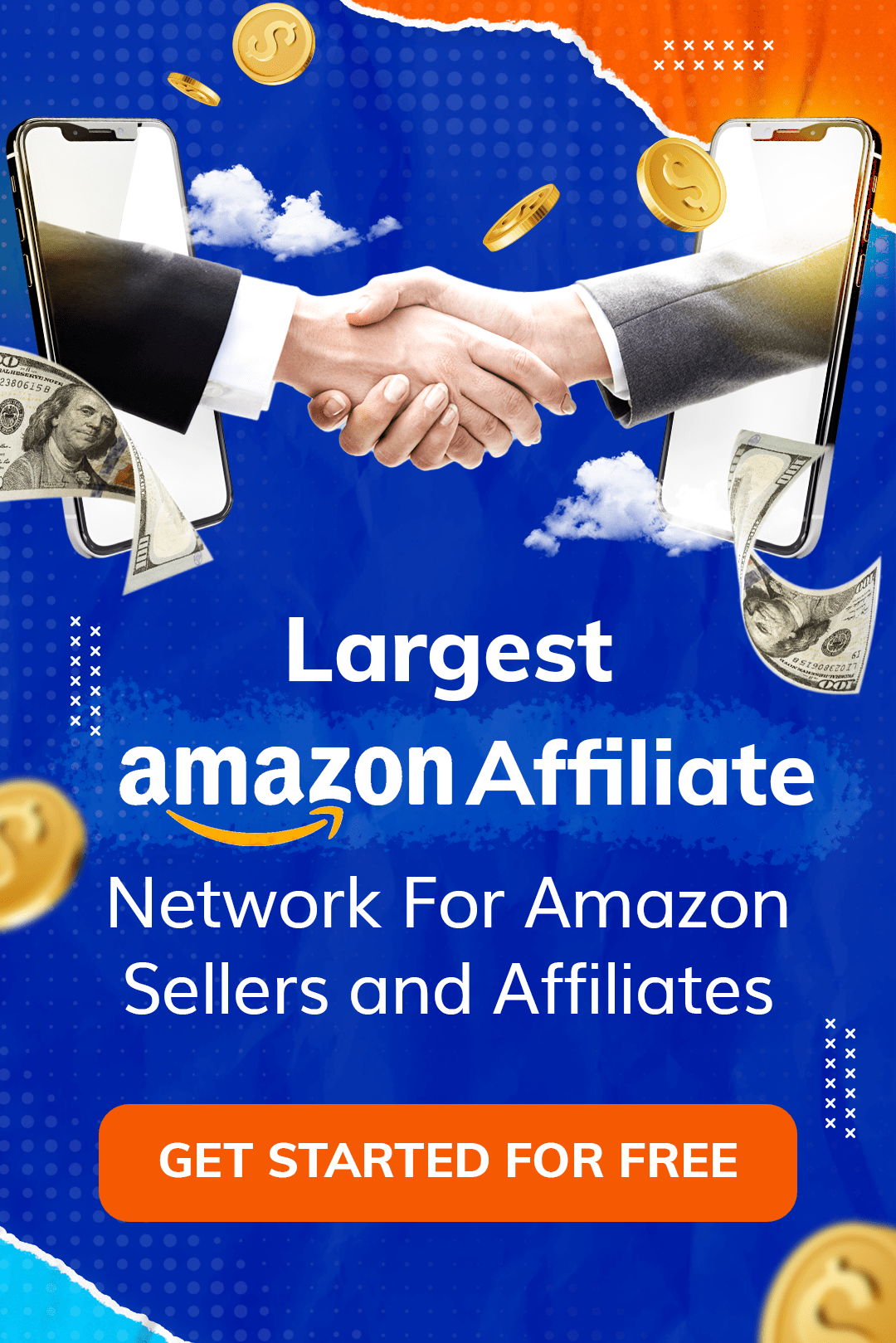Instagram influencer marketing has become one of the most powerful digital strategies for brands today. Both global brands and small businesses use the power of Instagram influencers to boost their brand awareness.
The question still remains: what exactly is influencer marketing on Instagram, is it really effective, and how to start an Instagram influencer marketing campaign?
In this article, we’ll answer all the questions. We’ll then explore a free influencer marketing platform (Ainfluencer) for running successful campaigns. Let’s get started!
What Is Instagram Influencer Marketing?
Influencer marketing on Instagram is a form of social media marketing where brands partner with influencers on Instagram to promote products or services.
These influencers create content (posts, Stories, Reels, videos, etc.) featuring a brand’s offerings in a way that feels genuine and engaging to their audience.
Different Forms of Influencer Marketing on Instagram
On Instagram, influencer marketing can take the following forms:
1. Sponsored Posts
Brands pay influencers to create a post featuring their product or service. It’s usually marked as a “paid partnership” or with a #ad.
2. Stories with Swipe-Up/Link Sticker
Influencers promote a product in their Stories and add a link (using the Link sticker) so followers can click through instantly.
3. Reels & Video Campaigns
This is about short videos (like Reels) where influencers creatively showcase a brand or product — usually in a fun, fast-paced format.
4. Brand Ambassadorships
This form involves long-term partnerships where an influencer becomes the ambassador of a brand. They regularly post and genuinely represent the brand’s vibe.
5. Affiliate Marketing
In this method, influencers promote a product with a unique link or code. They earn a small commission for every sale made through their referral.
Instagram Influencer Marketing Statistics
We’ll talk about the benefits of influencer marketing on Instagram. But first, let’s take a look at some of the most important stats:
- Instagram is still the #1 platform for influencer marketing, used by over 80% of brands.
- Brands earn an average of $4.12 for every $1 spent on influencer campaigns on Instagram. This indicates a robust ROI.
- Around 83% of Instagram users report discovering new products or services on the platform, often influenced by creators.
- And, micro-influencers on Instagram have an average engagement rate of 0.99%, surpassing that of larger influencers.
Main Benefits of Instagram Influencer Marketing
Collaborating with Instagram influencers can offer huge advantages for brands. Here are some key benefits:
1. Authenticity and Trust
Influencers are trusted content creators whose recommendations feel more genuine than ads. Because over 90% of people trust word-of-mouth, their endorsements act as powerful social proof.
When brands partner with influencers, they tap into that trust and credibility to win over potential customers.
2. Access to a Targeted Audience
Instagram influencers usually focus on specific topics like fitness, beauty, or tech. Their followers are into those same things. That makes it easier for brands to reach the right people.
For example, a healthy snack brand can work with a wellness influencer to connect with health-focused followers. This kind of targeting often works better than general ads.
It’s also a smart way to reach younger audiences like Millennials and Gen Z, who use Instagram way more than Boomers.
3. High Engagement and Visibility
Another main advantage of Instagram influencer marketing is the increase in engagement. Influencers get more engagement because their posts feel real, not like ads.
The best part is that smaller influencers often have higher engagement rates than big celebrities. So, why not try influencer marketing on Instagram and get more reach?
4. Increased Brand Awareness and Followers
A big benefit of working with Instagram influencers is tapping into their follower base to grow your own. When an influencer talks about your brand, it puts you in front of a whole new audience.
People often check out your page, leading to more followers. It’s like word-of-mouth, but bigger and faster.
5. Improved ROI Compared to Ads
Influencer marketing often gives a great return. In fact, some brands make over $5 for every $1 spent. It builds awareness while also driving sales.
Plus, it’s more flexible and cost-effective than many other channels, especially when using micro-influencers or product gifting.
6. Higher Conversion Rates and Sales
Ultimately, Influencer campaigns often drive conversions like sign-ups or purchases. Since followers trust influencers, 49% of consumers say their buying decisions are influenced by influencer content at least once a month.
Promo codes and trackable links make it easy to measure results — and can even lead to sell-outs when a post goes viral.
How to Start an Instagram Influencer Marketing Campaign
You know a lot about influencer marketing on Instagram and you want to get started? It may seem challenging, but it’s easier than you think. Just follow these steps:
1. Define Your Goals and KPIs
Whether you want to do influencer marketing on YouTube or Instagram, you need to decide what you want to achieve. Here are the main goals for starting an influencer marketing campaign on Instagram:
- Increase brand awareness,
- Drive conversions,
- Build trust and credibility,
- Grow your Instagram following,
- Generate high-quality content,
- Improve engagement,
- Boost SEO and online visibility,
- Launch a new product or campaign.
Set specific goals, such as “Drive 1,000 visitors to our product page” or “Increase Instagram followers by 20% this quarter.”
Along with goals, establish KPIs to measure success. For example, if sales are the goal, your KPIs might be the number of orders and revenue using an influencer’s promo code. The key KPIs you need to track include:
- Reach,
- Engagement rate (Likes, comments, shares, and saves),
- Follower growth,
- Conversions (Sales, sign-ups, downloads, or any other goal action),
- Link clicks / Swipe-ups,
- Discount code redemptions,
- ROI,
- Brand mentions & UGC.
2. Identify Your Target Audience
Next, define who you want to reach based on your goals. Think about age, interests, and what Instagram communities they follow.
For example, eco brands may target outdoorsy, eco-conscious 18–35-year-olds. We recommend you build a simple audience persona to guide your influencer choices.
3. Set a Budget and Campaign Parameters
Now, it’s time to decide how much you can spend. Budgets vary, but even small ones can work with micro-influencers or offer free products.
Plan for influencer fees, gifting, and any platform or agency costs. Set campaign details like timeline, number of influencers, and content expectations.
Some brands start with 1–3 influencers; others go bigger. It’s important to research typical rates. Nano-influencers may post for free products, mid-tier ones charge a few hundred, and larger accounts cost more.
Leave some flexibility for extras like bonuses or promoting posts as ads. Clear parameters help you choose the right influencers
4. Find and Research Potential Influencers
Discovering the right influencers for your campaign is a critical step. How can you find your ideal influencers?
- Search relevant hashtags (e.g. #fitnessmotivation, #makeuptutorial, #veganrecipes) to discover niche influencers.
- Use Instagram’s Explore page with keywords related to your product or audience.
- Check your own followers or customers to see if any are influential in your niche.
- Or, use free influencer marketplaces like Ainfluencer where you can search through a vast database of influencers by location, follower count, niche, etc.
While things like hashtag searches or scrolling through the Explore page can help you find influencers, let’s be real—they’re slow, hit-or-miss, and kind of a pain.
You often end up wasting time, and it’s hard to tell who’s actually a good fit or has real engagement. While some brands work with Instagram influencer marketing agencies to outsource their campaigns, it’s extremely pricey for smaller brands. Here’s a more budget-friendly option:
Why Ainfluencer Is the Best Platform for Finding Instagram Influencers
Ainfluencer is a free, DIY influencer marketing platform that lets you invite multiple Instagram influencers directly — all in one place. That’s where Ainfluencer makes things easier:
- Huge influencer pool: Ainfluencer gives you access to over 5 million influencers on Instagram, YouTube, and TikTok. So, whether you want someone with 5K or 500K followers, you’ll find them here.
- Smart filters: You can narrow down your search based on things like location, audience gender, follower count, niche, engagement rate, etc. No more endless scrolling—just influencers who actually match your brand.
- Easy matchmaking: The platform recommends influencers that fit your campaign, so you’re not left guessing who to reach out to.
- Built-in chat: You don’t need to slide into DMs or send emails. You can message influencers directly on Ainfluencer and manage all convos in one place.
- Safe payments: Ainfluencer holds your payment until the influencer delivers the content. So you don’t have to worry about getting ghosted after you pay.
- Real insights: You can check out an influencer’s past performance, engagement levels, and audience details to make sure they’re the real deal.
Ready to find Instagram influencers without the stress?
Try Ainfluencer For Free5. Reach Out and Communicate the Opportunity
Once you have a few top-choice influencers, it’s time to reach out. You can reach out to influencers via Instagram DM or email (check their bio or Linktree).
Keep your message short, friendly, and professional. Introduce your brand and explain why they’re a good fit.
Mention what the campaign involves (e.g. one post + one Story) and what you’re offering—either a free product or payment. If paying, ask for their rate card instead of guessing a price. Personalize each message—avoid copy-paste emails.
If they’re interested, move to details. Be clear about what you need (deadlines, content style), but stay open to their ideas.
Don’t forget to treat them like a partner, not just a promoter. Once you agree, confirm everything in writing with a simple contract that covers deliverables, timing, payment, rights, and disclosures. If you’re sending them a product, collect their shipping info early.
6. Collaborate on Content Strategy
The influencer is on board and it’s time to share a simple campaign brief. This should cover key product points, brand guidelines, hashtags, and the posting timeline.
Be sure to mention how to disclose the partnership, like using #ad. While it’s important to give clear guidelines, avoid micromanaging. The influencer knows their audience best!
It’s best to ask them to send a preview or chat about the content idea to make sure everything’s accurate and on brand. Keep things friendly and open, and be willing to hear their ideas.
Sometimes they’ll suggest fun extras like giveaways or live sessions. Working together like this usually results in more authentic and engaging content.
7. Launch the Campaign
When it’s time to post, make sure everything’s set. The influencer should tag your account and use your hashtag. Once it’s live, like the post, leave a comment, and share it to your Story.
Keep an eye on the post after it goes up. Jump in to answer comments if needed. For Stories, you might get a preview—approve it quickly and ask them to save it to a Highlight if it makes sense.
Stay in touch, thank them, and fix any small issues quickly. If all goes well, you’ll start seeing engagement and traffic soon after.
8. Track Performance Metrics
As the campaign rolls out, keep an eye on how it’s doing. Check your Instagram insights for any spikes in followers, reach, or engagement.
If you gave the influencer a custom link or discount code, track how it performs—this helps you see what traffic or sales came from the post.
You can also ask the influencer for their Instagram post metrics, like impressions, reach, and engagement. Most are happy to send a screenshot from their Insights.
Then, compare everything to your original goals. Did you hit your target clicks, conversions, or engagement? Gather all the data as you go and once the campaign ends, see what worked best.
9. Optimize and Follow Up
After the campaign ends, take time to review the results. Which influencer got the most engagement or sales? What type of content performed best? Use these insights to plan smarter next time.
If one influencer really clicked with your audience, think about working with them again. Share campaign feedback with your influencers too—they’ll appreciate it. Great results could even lead to long-term partnerships.
Also, don’t let that great content go to waste. With permission, reuse it on your Instagram, in emails, or even on your website.
Finally, jot down what worked, what didn’t, and what you’d do differently. That way, your next campaign runs even smoother.
Instagram Influencer Marketing Examples
A great way to see how Instagram influencer marketing works is to look at brands that nailed it. Here are some examples from different industries. They show what strategies were used and the results they got.
Example 1: Nike’s Personalized Fitness Campaign
In 2024, Nike switched things up by working with everyday fitness micro-influencers instead of just big-name athletes.
They teamed up with fitness enthusiasts and trainers who have smaller but engaged followings. These influencers shared honest stories about their fitness journeys and how Nike gear helped them reach their goals.
The content felt real and relatable, which clicked with a lot of people. Using the hashtag #justdoit, the campaign sparked huge engagement. Nike saw a 34% jump in brand mentions and a 20% boost in global sales during the campaign.

Example 2: Nykaa’s Beauty Influencer Army
In another inspiring campaign, Nykaa launched a new lipstick range and went all-in on Instagram influencers to spread the word.
They worked with a mix of big beauty influencers and smaller micro-influencers, who made tutorials, swatch videos, and honest reviews.
Because these influencers reached different audiences—from makeup pros to everyday users—the campaign was both wide-reaching and authentic.
The results were impressive: over 100 million views on Reels and a 40% jump in lipstick sales in just the first month.
Example 3: Fenty Beauty
Among the top beauty brands working with influencers, Fenty Beauty has run one of the most successful campaigns. It invited diverse beauty influencers from different ethnicities and skin tones to demonstrate inclusivity.
Influencers shared makeup tutorials, product reviews, and real-life looks, emphasizing Fenty’s wide shade range.
The results? Fenty became an instant hit, generating over $100 million in sales within the first 40 days of launch!
Final Words
Instagram influencer marketing is all about teaming up with creators who already have the trust and attention of a specific audience. It’s a smart way to reach the right people, get authentic content, and boost credibility and conversions through word-of-mouth.
Whether you’re a small brand or a big name, if your audience is on Instagram, influencer marketing should be on your radar.
The key? Know your goals, pick influencers who genuinely align with your brand, and let them tell your story in their own voice. Don’t forget to track what’s working so you can keep improving.
And to make things easier, we recommended using a platform like Ainfluencer. It helps you find the right influencers, manage campaigns, and access smart tools like AI matching.
FAQs
Now, let’s address some frequently asked questions about influencer marketing on Instagram.
1. How Much Does Instagram Influencer Marketing Cost?
The cost of influencer marketing on Instagram depends on the influencers you work with and the scope of your campaign.
Many mid-tier Instagram influencers charge between $100 to $500 per post, while more established influencers often charge $1,000 or more per post.
2. How to Measure the Success (ROI) of an Instagram Influencer Marketing Campaign?
To measure the ROI of an Instagram influencer marketing campaign, track key metrics like engagement rate (likes, comments, shares), reach, click-through rate (CTR), and conversions or sales using unique discount codes or affiliate links.
Use UTM parameters to monitor traffic and conversions in Google Analytics. Compare campaign costs against actual revenue or leads generated to calculate ROI. Focus on metrics tied directly to your campaign goals—whether it’s brand awareness, app installs, or sales.
3. How Effective is Influencer Marketing on Instagram?
Influencer marketing on Instagram is highly effective due to its visual focus and engaged audience.
It delivers strong ROI—up to 11x higher than traditional banner ads—and boosts trust, with 69% of consumers trusting influencer recommendations.
4. What Is the Difference Between Instagram Ads and Instagram Influencer Marketing?
Instagram Ads are paid placements run directly through Meta’s ad platform, targeting users based on data and behavior. Instagram Influencer Marketing, on the other hand, involves partnering with creators who promote your brand to their followers through organic-looking content.
Ads are direct and controlled by you; influencer content is more personal, trust-driven, and often performs better in engagement and authenticity.

